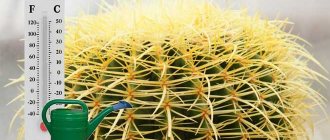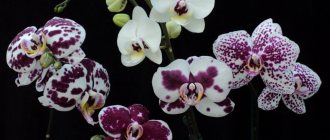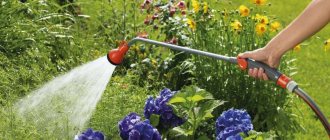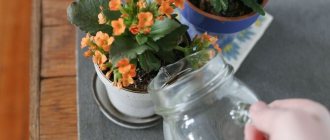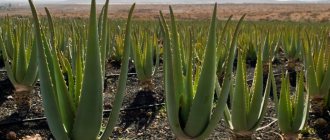How rich the harvest will be largely depends on how you water it. While weeds are mostly adapted to obtain water on their own, cultivated plants require forced watering. Otherwise, they will either die or will not develop normally. At the same time, you also need to be able to properly water your gardening plantings. The amount of incoming moisture, the frequency of its supply, the time of day, etc. play an important role here. Experienced gardeners who have grown dozens of crops in their lives often rely on their own experience. Those who have only recently begun to master crop production need to either learn from their own mistakes or first study the equipment in order to go out into the garden already prepared. Of course, the second option is more preferable, since it reduces the likelihood of ending up without vegetables and fruits. And our new article is designed to help you figure out how to properly water plants in your dacha, what watering methods exist, what their advantages and disadvantages are.
Popular watering methods
First of all, you need to understand that water supply technologies at a summer cottage and at large-scale agricultural plantations differ significantly. Therefore, let’s immediately make a reservation that we will consider methods and rules for watering relatively small planting areas in dachas and personal plots.
Here you can use the following options for providing plants with moisture:
- Snow retention. A natural method of irrigation that involves saturating the ground with melt water. Thanks to this, by the time the plants are planted, the soil does not have time to dry out and reduce its fertility.
- Hose irrigation. Perhaps the most common option in Russia, in which a hose is connected to the water supply system or well pump, with which you can water the most remote corners of the garden without constructing a complex pipeline system.
- Sprinkling. An automated version of the previous method. A rotating nozzle is connected to the free end of the hose, spraying a stream of water into many small sprays that evenly moisten a wide area.
- Drip irrigation. Various technologies, the common feature of which is the drip application of moisture. Experts consider this method of irrigation to be the most advanced and effective, but it can hardly be called simple.
Now we can consider the above options for water supply to cultivated plants in more detail, focusing on their features, advantages and disadvantages.
Snow retention
Of course, the absorption of melt water into the soil can only be called irrigation at a stretch, but it is of great importance for perennial garden crops, including shrubs and trees. If the earth is well saturated with moisture with the arrival of warmth, then the plants will quickly emerge from the wintering state and begin the growing season more actively. However, often just snow drifts may not be enough, so care must be taken to ensure that when the water melts, it remains on the site and does not flow beyond it. To do this you can:
- in the first half of March, trample the snow along the boundaries of the site to form a kind of parapet that will retain water;
- crush the snow or cover it with spruce paws (holiday trees left over from the New Year will also work), in this case it will melt more slowly and saturate the soil with moisture longer;
- plant tall annual or perennial grasses along the boundaries of the site, which will act as barriers that retain snow on the site.
Another way to use snow for irrigation is to accumulate it in some kind of reservoir (tanks, barrels, etc.) In the spring, this will be your strategic supply of water, which can be used before the launch of the central water supply system, which is especially important for SNT. In addition, filling a watering can from a barrel filled with water is usually easier than connecting a hose.
The main disadvantage of snow retention is its low practicality. In most cases, the snow melts completely long before active gardening activities begin, so this is more of an addition to the main watering.
Hose irrigation
The simplest and most familiar method to many, which, however, if performed incorrectly, can cause much more harm than good. It would seem that what could be difficult here? We turned on the water, picked up the hose, and poured it onto the ground. As experts say, this simplicity is imaginary; in reality, you still need to learn how to water with a hose. And here are just some of the subtleties:
- Do not pour cold water directly onto the leaves of plants - this can lead to thermal shock and slow development of plants;
- It is best to lay the hose directly on the ground so that the water gets immediately as close to the roots as possible;
- It is strictly forbidden to water with a hose in the heat of the day, because this can injure the plants;
- the optimal time for hose irrigation is late evening, when the ground has already cooled sufficiently from the heat of the day;
- The water pressure should be minimal so as not to erode the soil and roots, so it is better to put a special spray nozzle on the hose, ideally with variable operating modes.
Watering gun Multispray Plus Gun
At the same time, watering with a hose is, of course, most convenient if you come to the dacha only for a short time. In this case, the construction of more efficient, but also more complex systems may be unprofitable.
When to water indoor flowers
Before watering the plant with a watering can, you need to check the moisture level of the top layer of soil and the weight of the pot. If the substrate has dried to a depth of 1-2 cm, and the weight of the container has decreased compared to the weight after the previous watering, then the flower needs watering.
To compensate for individual factors, it is necessary to increase not the abundance, but the frequency of watering
In addition, it is worth considering a few more nuances:
- Times of Day. Plants should not be irrigated while the sun is shining on them or during the day. In summer, the earthen lump will be better saturated with moisture if water is added closer to sunset. In winter, it is advisable to water the flowers in the morning. Then, during the short daylight hours, they have time to absorb water with their roots.
- When watering in the morning, do not allow liquid to get on the leaf blades. Small lenses made of water will increase the effect of sunlight and cause burns.
- Individual characteristics of cultures. A collection of indoor plants often consists of drought-resistant, moderately moisture-loving and moisture-loving representatives. If you water them on the same days, you can seriously disrupt the living conditions of individual green pets.
- The best strategy is to create a watering schedule for each flower based on its type and variety, and record the information in a simple table.
- Fluctuations in the environment, stages of plant development. Even a well-written watering table does not serve as a clear indication, but rather as a guide. In any case, the gardener will have to increase watering during low air humidity, active vegetation, intensive operation of heating devices, and hot weather.
Sprinkling
This method allows you to practically automate watering. All you need is to connect a special nozzle to the hose, which will rotate under the pressure of water and spray it around in the form of small droplets. As a result, you get both a large irrigation area and its uniformity.
However, here we must again take into account that cold water for plants heated under the sun can be quite dangerous. Therefore, if you pump water from a deep well, then such watering can cause significant damage to the plants.
Sprinkler HoZelock 2510
Sprinkler irrigation is best for insensitive crops such as potatoes, most root vegetables, and corn. Due to their “thick skin”, they react weaker to temperature differences. At the same time, this irrigation technology will not allow the area to become swampy or the soil to become saline. It is also impossible not to note the fact that small drops, falling into the ground from a certain height, better penetrate into the thickness of the earth.
The optimal time for sprinkling is again in the evening. It is better to use heated water, for example from barrels or a tank located on an elevated surface. This method is also suitable for applying fertilizers: they can be dissolved directly in irrigation water.
The disadvantages of this method, in addition to those mentioned above, include the following:
- high water consumption;
- relatively labor intensive - even if you use rotating nozzles, you will still have to move them regularly.
You also need to choose the right nozzle that will spray water. Here it is necessary to take into account the grip radius, the size of the droplets formed, and the reliability of the rotation mechanism.
Is it possible to leave water in the pan?
When top watering house plants, part of the water often ends up in the tray. Some consider this excess moisture that needs to be drained so that the flower does not turn sour. But it is not so! After all, the soil is sometimes not able to absorb all the incoming water at once. For example, if the substrate is dry enough, some of the water may pass through, but after a while the earth will “draw in” the “unfinished” water. This ensures complete watering! In addition, if there is drainage at the bottom of the pot, it will protect the soil from souring.
However, everything is individual! So, for succulents, a lot of excess moisture in a pot may not be desirable, because their roots prefer to be in conditions of moderate humidity. Therefore, it is worth checking the pan after half an hour - if the water has not been absorbed, it is better to drain it. For moisture-loving plants - nephrolepis, hoya, palm trees, many decorative deciduous plants, moisture in the tray is not at all dangerous, but even beneficial.
Drip irrigation
A highly efficient watering system that truly allows you to automate the supply of water to garden plants. It works as follows:
- oozing hoses or pipes are laid in the bite zone;
- moisture, passing through the resulting water supply, evenly passes through the perforation and enters directly into the root area.
The method itself is quite simple and at the same time effective. First of all, plants receive exactly as much water as they need. It is also important that watering is ensured evenly: water is supplied almost constantly in small doses, so the plantings do not experience significant stress.
Dripping hose PALISAD 1/2″ 8m
Drip irrigation is especially important for perennial crops, including those sensitive to humidity levels, in particular for vineyards. This method is also suitable for areas with difficult terrain. With intensive watering, water here will flow down the slope, eroding the soil and leaving the upper plantings dry, and with drip supply it will be almost immediately absorbed into the soil.
To organize such an irrigation system at your summer cottage, you can use a large reservoir located on a hill and oozing hoses. They can either be laid directly on the ground or slightly buried into it.
You can arrange a more complex, but also more reliable system:
- install a large barrel or tank (recommended volume - from 500 l);
- we assemble a water heating system (the optimal temperature for drip irrigation is 20-25 degrees);
- install a circulation pump;
- we lay a system of oozing pipes, including all trees and shrubs.
Such watering will be especially relevant on sandy soils, which absorb water very quickly. At the same time, it may be irrational to build such a system on a small suburban plot where mainly vegetables are grown. Therefore, this method is most often used in orchards, vineyards, etc.
Types of irrigation
In addition to different methods, different types of irrigation are also used:
- planting - promotes better survival of plants planted in open ground;
- main - ensures the maintenance of a sufficient amount of moisture in the soil during the growing season;
- refreshing - used to prevent plants from withering when it’s too hot outside;
- anti-frost - if frosts are expected, such watering will help reduce the likelihood of plantings freezing;
- feeding - in this case, not pure moisture is used, but an aqueous solution of fertilizers.
To grow a healthy and abundant harvest, you need to use all these types in combination. In this case, it is necessary to comply with the individual requirements of different cultures, climatic features and other factors.
Rules for watering plants on the site
Watering plants seems to be the simplest maintenance procedure. Most people don't even realize that it's possible to do this badly. Find out how not to water the plants on your property .
Water for plants is a necessary factor influencing not only healthy and strong growth, but also the life of the plant as a whole. The most important care procedure is to supply the plants with water. Contrary to popular belief, watering garden plants is not as simple as it might seem at first glance . Without basic knowledge, you can make many mistakes, and in extreme cases, even lead to the plant dying.
The most common mistakes when watering garden plants
It’s not just beginners and inexperienced gardeners who make mistakes when watering. It is worth knowing the basic principles so that errors in watering do not adversely affect the condition of the plants on the site. Once we become familiar with them, I hope we will water them correctly.
The most common mistakes include:
- watering in hot weather
- frequent watering with too little water
- watering too hard
- soaking leaves.
When to water plants in the garden
Garden plants should be watered early in the morning or evening.
- Morning watering of garden plants - in the morning it is not yet hot, after watering the plants will have time to dry out before the heat sets in;
- Evening watering of garden plants - before and after sunset the temperature drops, and the sun no longer causes burns. At the end of the day, plants crave water.
Rules for watering the garden
Regardless of which watering method you choose, you should adhere to a number of general recommendations:
- The optimal time to water plants most safely is early in the morning, while the air is still warm, and late in the evening, when the heat of the day has already subsided. However, if the nights are cold, it is better to water in the morning.
- Water supply must be regular, uniform and sufficient. It is better to water more often, but in smaller quantities, than to pour a week’s worth of water onto the beds and flower beds at once. At the same time, small volumes of it may simply not reach the roots, so the principle of sufficiency is important.
- Each crop has its own watering standards that must be followed. For example, if there is a lack of moisture, cucumbers begin to taste bitter, while tomatoes, if they are regularly overwatered, can begin to burst and rot.
- The hotter it is outside, the more water the plants need.
- If the weather is cloudy, then the volume of watering can be reduced, but not completely eliminated, because the clouds may not rain.
- In spring, the soil needs to be soaked to a depth of about 10 cm, since it still contains quite a lot of melt water.
- In summer, the average watering depth is 20-30 cm.
- The water should not be too cold or too hot. The optimal watering temperature range for most crops is 15-25 degrees.
- Freshly planted seedlings need to be watered daily, this will help them tolerate transplantation more easily.
- The most careful attention should be paid to watering from the moment the first shoots appear until the flowers form - at this moment, the regularity and sufficiency of water supply is especially important.
- The denser you plant the plants, the more abundantly they should be watered.
- Consider the characteristics of the soil. Loamy soils absorb moisture slowly, so you can water such areas less frequently. Sandy soils absorb water very quickly.
- When irrigated with water, a dense crust can form on the ground, which will prevent moisture and air from fully penetrating into the soil. Therefore, you must remember to loosen it regularly.
- Mulching helps increase the efficiency of moisture retention in the soil.
How often to water house plants
Due to the fact that there are plenty of factors influencing the frequency and abundance of hydration, an individual approach is required for each flower. However, there are general recommendations that tell you how to water your house flowers:
- material used in making a pot. Representatives of the same species growing in pots made of clay and plastic need to be watered differently. The first will require more moisture than the second, since the water in it also leaves through the porous walls;
- The size of the pot also plays a role. Obviously, a large pot will require more water than a small one;
Watering indoor flowers
- location of the bush. Watering indoor plants located on the south side should be more intensive, especially during the warm period;
- air temperature. Plants located in a warm room need to be watered more often and more intensively than those located in a cool room. By following this rule, you can avoid drying out the soil or rotting the roots;
- the weather, which also determines how often indoor flowers need to be watered. In hot weather, the amount of water should be increased and vice versa.
Important! In everything you need to know when to stop. And in the heat, you should not water the flower garden too intensively; this should be done only as needed. And most importantly, you need to focus on the type and botanical group of the indoor flower.
Recommendations for watering in a greenhouse
If you grow plants in a greenhouse or greenhouse, then consider the following recommendations:
- The temperature here is higher than outside, so more water is required.
- To maintain constant humidity, you can install open containers of water in the greenhouse.
- Greenhouse cucumbers should be watered directly at the root.
- Tomatoes planted in a greenhouse or greenhouse should not be watered in the first week after planting.
After transplant
Orchids are replanted not only after purchase, but also after hibernation. It is worth noting that it is better not to use large pots. The more compact the flower pot into which the orchid is transplanted, the better the roots will develop in it. As soon as the flower is transplanted into a new pot with a new substrate, it should be watered immediately. Then the flower pot with the orchid should be placed in a container filled with warm water for 20-25 minutes. After this time, the excess liquid should drain, and then the pot is placed in a darkened room, away from bright sunlight. The next two weeks after transplantation, the orchid does not need watering. The flower experiences stress after transplantation, so it is better not to disturb it. Frequent watering can only worsen the situation, so you should leave the orchid alone for 14 days.
After the orchid adapts to new conditions, it will need additional nutrition, a comfortable place, and good care. You need to water the flower at least twice a week, ideally 2-3 times every 7 days. Orchids are replanted in the summer, before flowering begins, so watering should be more frequent.
